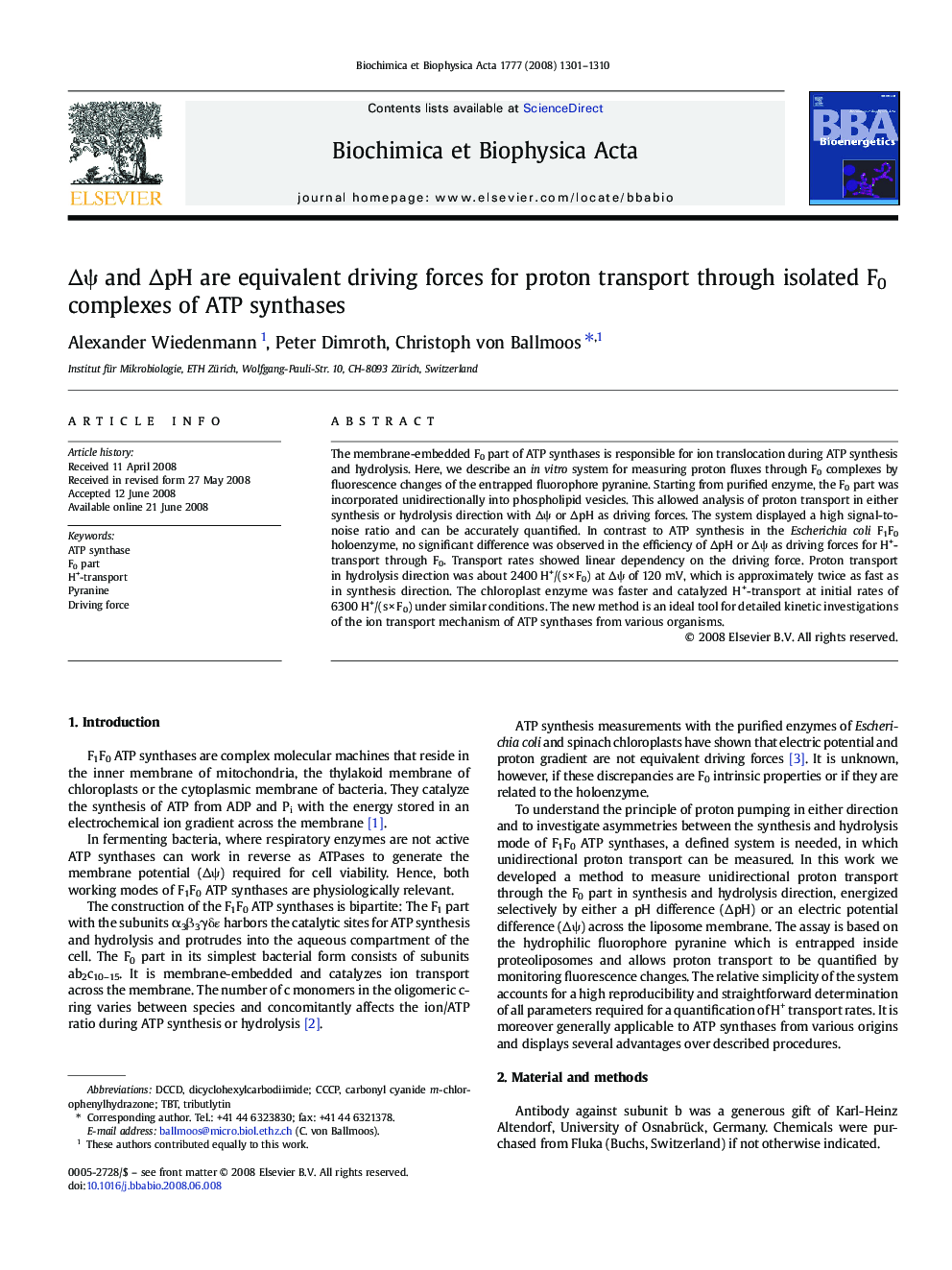| Article ID | Journal | Published Year | Pages | File Type |
|---|---|---|---|---|
| 10796042 | Biochimica et Biophysica Acta (BBA) - Bioenergetics | 2008 | 10 Pages |
Abstract
The membrane-embedded F0 part of ATP synthases is responsible for ion translocation during ATP synthesis and hydrolysis. Here, we describe an in vitro system for measuring proton fluxes through F0 complexes by fluorescence changes of the entrapped fluorophore pyranine. Starting from purified enzyme, the F0 part was incorporated unidirectionally into phospholipid vesicles. This allowed analysis of proton transport in either synthesis or hydrolysis direction with ÎÏ or ÎpH as driving forces. The system displayed a high signal-to-noise ratio and can be accurately quantified. In contrast to ATP synthesis in the Escherichia coli F1F0 holoenzyme, no significant difference was observed in the efficiency of ÎpH or ÎÏ as driving forces for H+-transport through F0. Transport rates showed linear dependency on the driving force. Proton transport in hydrolysis direction was about 2400 H+/(s Ã F0) at ÎÏ of 120 mV, which is approximately twice as fast as in synthesis direction. The chloroplast enzyme was faster and catalyzed H+-transport at initial rates of 6300 H+/(s Ã F0) under similar conditions. The new method is an ideal tool for detailed kinetic investigations of the ion transport mechanism of ATP synthases from various organisms.
Keywords
Related Topics
Life Sciences
Agricultural and Biological Sciences
Plant Science
Authors
Alexander Wiedenmann, Peter Dimroth, Christoph von Ballmoos,
